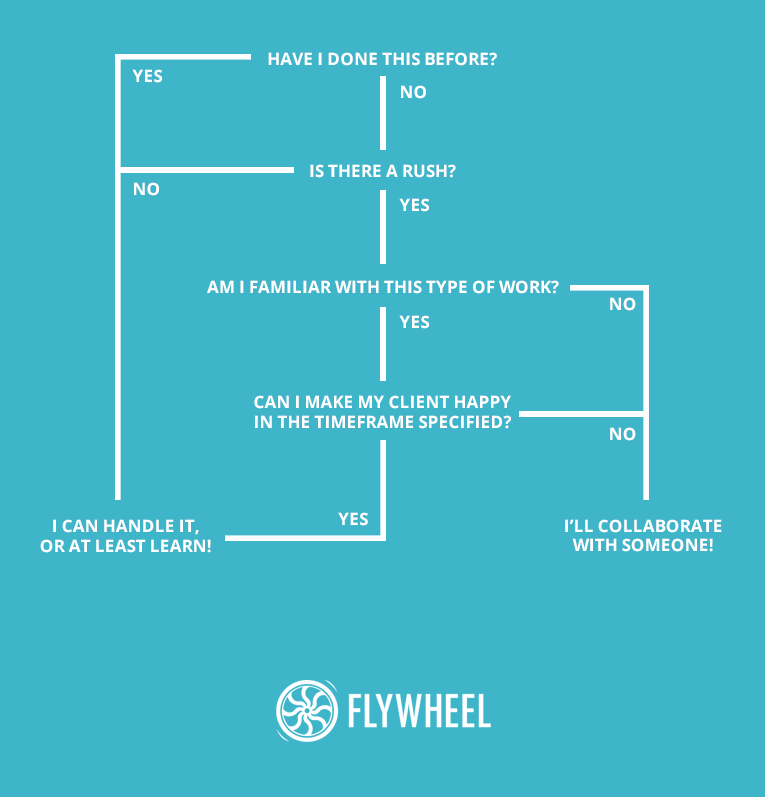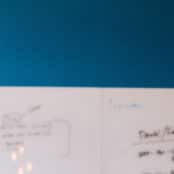
Let’s start by addressing the fact we all have a tendency to take on too much as creatives. I, for one, do this constantly for two reasons: First, you never know where or when inspiration is going to strike, and two, nine times out of 10 it sounds like a fun project. So I have to be a part of it, right?
And when you’re starting out as a freelance graphic designer, it’s easy to accept a job any time someone approaches you, even before you hear what the client wants. For example, I’m always eager for new work and new clients because I can almost always assume I will have an opportunity to expand my creative boundaries. And, obviously, gaining another client is priority number one when you’re starting out.
Of course, saying yes to everything can land you with more work or perhaps bigger projects than you can handle on your own.
Unfortunately I suffer from “If you want something done right, you have to do it yourself.” It’s not that I don’t like the work of my peers, colleagues, or other professionals, — they’re really good at what they do. I just have to admit that I am a bit of a perfectionist. When it comes to my work, especially as a designer, I want it to be my best work. So I end up spending a lot of time on details and get a bit obsessive about little things that most people don’t worry about.
Now that I’ve made myself sound like I’m difficult to work with (I’m not — promise!), let’s dive into how I decide whether or not to work with another designer on a project:
If you’re like me, the moment when you probably should have enlisted help was yesterday. So I’ve developed a list to help decipher if a new project will be one man or two:
What’s the project? If this is a new project, but it’s something I’ve done before, such as a logo design, I pretty much know that I can handle it myself. If it’s a project I’ve never done before, then I ask myself:
What’s the timeline? I need to know how quickly the client is looking to turn this project around. If there is no rush and I don’t have a lot of other major projects on my plate, I will most likely be working independently. If there is a rush, I will be asking myself:
How familiar am I with this type of project? If I’m already familiar with the content, work, style, medium, and so on.etc. I might still take this project on independently as a challenge for myself. However, I ONLY do this if I know I can finish by the deadline and please the client. If the project is entirely out of my area of expertise, but I still want to take on the project, I ask myself one last question:
How long will this take me? My allotted time to work and estimated amount of time it will take me to complete said project needs to match up prior to the deadline. However, let’s say I’ve accepted a project that I’m unfamiliar with, such as building a website from scratch. I will maintain my same hourly rate and estimate the minimal amount of time. I always value an opportunity to learn and I care about the work that I do. That being said, I will most likely only charge a client for a quarter of the time I spent working on it.
If the majority of my answers are on the dark and shady side of the unknown, I will do one of two things: I will either decide the project is too large for me and I will reach out to my network and ask someone to team up with me, or — gasp! — I’ll turn the client down. But if I have to turn a client down, there’s a really good chance I have referrals for them.
Fortunately, I’ve built a resourceful network in my area of agencies, freelancers, and peers in a variety of professions. I take care that whomever I refer will be highly respected, and I’m confident the referral will be what the potential client is looking for.
Every designer has different methods for handling tough situations — cough, cough, like a project being too large for one person. My flowchart solution may be different than yours, so let me know what you think. However, if this helped you with your own situation, and you’d like to make my day, let me know.








Comments ( 0 )